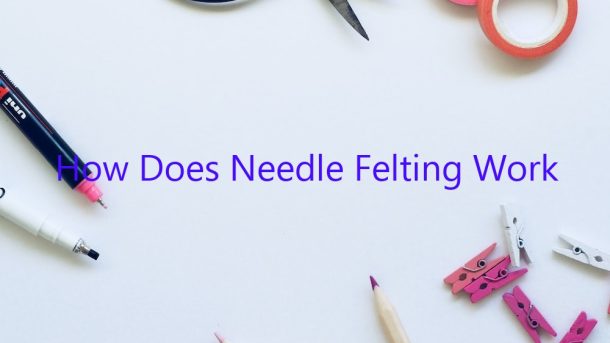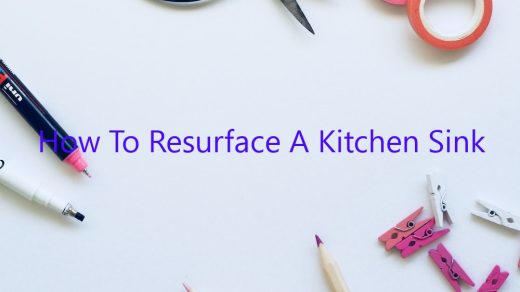Needle felting is the process of using a barbed needle to jab at wool fiber, causing it to tangle and mat together. This process can be used to create a wide variety of items, from simple pouches and home decor to more complex 3-D sculptures.
The first step in needle felting is to select the fibers you want to use. You can use almost any type of wool, as well as other materials such as alpaca, mohair, or even silk. Next, you’ll need to get the fiber ready to work with. This can be done by carding it, which means brushing it and aligning the fibers in one direction. You can also use a roving, which is a long, thin strand of fiber that is already carded.
Once you have your fiber ready, it’s time to start needle felting. Begin by poking the needle into the fiber at a 45-degree angle. You’ll want to make sure the needle is inserted all the way into the fiber, and then twist it slightly to create a tangle. Continue doing this until the fiber starts to form a ball. You can then start shaping the ball into the desired form.
Needle felting is a relatively easy process, but it does take some practice to get the hang of it. It’s also important to be careful when working with the needles, as they can be sharp. With a little bit of practice, you’ll be able to create all sorts of amazing needle felted creations!
Contents
Is needle felting difficult?
There is no right or wrong answer to this question as it depends on each individual’s experience and perception. Some people may find needle felting a difficult and frustrating process, while others may find it relatively easy and enjoyable.
The main difficulty with needle felting is that it can be quite easy to make mistakes. If you are not careful, you can easily poke yourself with the needle, or accidentally felted wool over areas that you did not intend to. This can be frustrating, especially if you are new to the process.
However, with a little practice, you will become more skilled and confident with needle felting. The more you do it, the easier it will become. So don’t be discouraged if it is difficult at first – just keep practicing and you will get better!
Is needle felting permanent?
There’s a lot of debate over whether needle felting is a permanent craft or not. The answer to this question really depends on the materials that you use and the techniques that you employ.
Generally speaking, if you use a synthetic batting or a high-quality wool, your needle felted creations should be fairly permanent. However, if you use a lower-quality wool or a non-wool batting, your pieces may not be as permanent.
In addition, the techniques that you use can also affect the permanence of your needle felted creations. For example, if you use a lot of water when felting, your pieces may not be as permanent as those that are created using less water.
Overall, if you’re using high-quality materials and employing sound felting techniques, your needle felted pieces should be fairly permanent. However, there is always a chance that something may happen to cause them to lose their shape or stability over time.
What is the difference between felting and needle felting?
Felting and needle felting are two different methods of creating a fabric from wool. Felting is a process that uses heat, moisture, and pressure to combine the fibers of wool into a single piece of fabric. Needle felting is a process that uses a barbed needle to poke the fibers of wool together, creating a fabric.
The main difference between felting and needle felting is the way the fibers are combined. Felting uses pressure and heat to combine the fibers, while needle felting uses a barbed needle to poke the fibers together. This difference results in different textures. Felted fabrics are usually smooth and dense, while needle felted fabrics are more textured and fluffy.
Felting is a more traditional method of creating a fabric from wool. It is simpler and requires less equipment than needle felting. Felting is also faster than needle felting. Needle felting is more complex and requires more skill. It is also slower than felting.
Felting and needle felting are both popular methods of creating a fabric from wool. They both have their own unique advantages and disadvantages. Felting is simpler and faster than needle felting, while needle felting is more complex and produces a more textured fabric.
How is needle felting formed?
Needle felting is a process where wool fibers are felted together by using a barbed needle. The needle is repeatedly jabbed into the wool, which causes the fibers to become matted together. This creates a fabric-like material that can be sculpted and shaped.
Needle felting is a relatively new crafting technique, which was developed in the early 1900s. It was initially used as a method of repairing clothing and blankets, but has since become a popular form of art.
Needle felting is a relatively simple process, and can be done by anyone with a little bit of patience. All you need is some wool, a needle, and a foam block to work on.
The first step is to create a ball of wool. You can do this by pulling pieces of wool from a larger piece, or by spinning the wool into a ball.
Once you have a ball of wool, you need to secure it to the foam block. You can do this by poking the needle into the ball until it becomes lodged in the foam.
Now you’re ready to start felting. To do this, you need to stab the needle into the wool, and then drag it across the surface. You should also make sure to twist the needle as you go, which will help to mat the fibers together.
It will take a while to felted the wool, so be patient. You may need to repeat the process a few times until the fibers are fully matted.
Once the wool is felted, you can start sculpting it into whatever shape you like. Just be careful not to stab yourself with the needle!
Is felting an expensive hobby?
Is felting an expensive hobby?
That depends on how you look at it. Felting is a process of turning wool into fabric by using heat, moisture and friction. There are several ways to do this, but all require some specialized tools and materials.
The most basic way to felt is to wrap wool around your hands and rub it together. This is how felt hats and slippers used to be made. However, this process is very slow and laborious.
A more efficient way to felt is to use a frame. This is a wooden or metal frame with a series of nails or hooks around the edge. The wool is wrapped around the frame and then rubbed with a bar or a brush.
The most common way to felt is with a washing machine. You can either use a commercial machine or make your own. The machine agitates the wool and causes it to shrink, which creates the fabric.
All of these methods require some specialized tools and materials, which can be expensive. A basic set of felting tools, which includes a frame, bar, and brush, can cost around $50.
Wool is also an expensive material. A ball of wool that is suitable for felting can cost anywhere from $5 to $20.
So, is felting an expensive hobby? It depends on how you do it. If you make your own machine, it can be a very affordable hobby. However, if you buy all of the specialized tools and materials, it can be quite expensive.
How long does it take to learn felting?
How long does it take to learn felting?
That depends on your level of experience. If you’ve never felted before, it will probably take you a few weeks to get the basics down. If you’re already familiar with other fiber arts, like knitting or crochet, you’ll likely pick up felting faster. In any case, practice makes perfect, so don’t be discouraged if it takes a little while to get the hang of it.
Do you need 100% wool to felt?
Do you need 100% wool to felt?
No, you don’t need 100% wool to felt. In fact, you can use a variety of different materials to create a felted fabric. For example, you can use a blend of 50% wool and 50% polyester. However, if you want to create a high-quality fabric, it’s best to use 100% wool.




